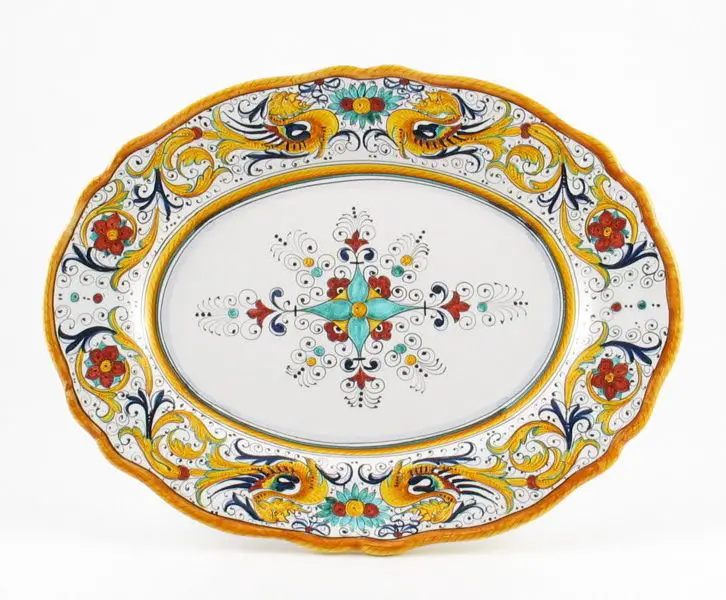What Can You Add To Clay To Soften Its Texture?
Clay is an earthy material containing minerals like silica, alumina, and iron. It has a pliable texture when wet, making it perfect for modeling, sculpting, and crafting. The specific texture and plasticity of clay depends on factors like the mineral content, the amount of water absorbed, and any additives included.
Clay is used for a wide variety of applications including pottery, ceramics, sculptures, bricks, and even facial masks. Having the ideal texture is crucial for these uses. A clay that is too stiff and dry cracks easily when shaped. Meanwhile, clay that is overly soft and moist loses its form and structural integrity.
Knowing how to modify the consistency of clay by softening it with different additives allows crafters to achieve the perfect texture for their specific needs. The proper adjustments make clay easier to mold and shape without becoming too watery or sticky.
Why Softening Clay is Important
Softening clay before use is an important step for crafters and artists working with polymer or air-dry clays. Properly conditioned clay is much easier to mold and shape without cracking or breaking apart. It has an improved overall workability that allows you to create smoother surfaces and finer details in your projects.
Stiff, hard clay can be difficult to roll out thinly or extrude through a pasta machine. Attempting to manipulate very firm clay often results in cracks, tears or creases in the material. Softened clay is more pliable and responsive to handling without damage. Items made with pliable clay also tend to retain their shape better without warping or cracking while drying or curing.
By taking the time to properly soften your clay, you’ll have an easier time sculpting intricate designs and smoothing seams. Your completed creations will have a more professional, refined look and feel. The conditioned clay will be pleasant and satisfying to work with during the creative process as well.
Water
Water is the most common method for softening clay. It works by hydrating the clay, allowing the particles to move more freely over one another. The amount of water added impacts the hardness of the clay. More water makes the clay softer, while less water keeps it firmer.
Start by kneading a small amount of water into the clay, a teaspoon at a time. Add water slowly until the clay reaches the desired consistency. For very stiff clay, let it soak in water for 10-30 minutes to fully hydrate before kneading. The clay will continue to soften as you work it.
Too much water can make the clay sticky and difficult to handle. If this happens, let it dry out slightly before continuing. A balance of water and clay must be struck to achieve optimal softness without getting overly wet.
Vinegar
Vinegar is an effective way to soften clay without compromising its durability. The main active ingredient in vinegar is acetic acid, which reacts with the minerals in clay to make it more malleable. Using vinegar avoids the stickiness that can occur when too much water is added to clay. It also extends the clay’s workable time.
To use vinegar, start by mixing equal parts clay and vinegar in a bowl or plastic bag. Knead it together thoroughly until the vinegar is fully incorporated. Let it sit for at least 24 hours. The clay will gradually absorb the vinegar and become soft and smooth. For even softer clay, you can add more vinegar, up to a 1:1 ratio with the clay.
White distilled vinegar works best since it has a higher acetic acid content. Avoid using colored vinegars, as they may stain the clay. Cider or wine vinegars can also be used. For optimal results, use undiluted vinegar. If desired, you can mix in a few drops of lemon juice as well to help brighten the clay color.
Once the clay is softened with vinegar, it will remain workable for longer at room temperature compared to just using water. The clay can then be shaped, sculpted, or used for any desired project requiring a flexible, moldable texture.
Vegetable Oil
Vegetable oil is a popular choice for softening polymer clay. Oils like olive, coconut, and avocado oil work well. The oil coats the clay particles, allowing them to slide over each other more easily instead of sticking together. This makes the clay more malleable and flexible without over-softening it.
Vegetable oil creates a temporary softening effect, so you don’t have to worry about permanently altering the clay’s consistency. Once baked, the oil evaporates away, leaving the clay in its original firm state. This makes vegetable oil a reusable clay softener. Simply knead a few drops of oil into stiff clay as needed to bring back its workable texture.
Glycerin
One way to significantly soften clay without altering its structural integrity is by mixing in glycerin. Glycerin is a clear, odorless liquid that acts as a humectant, meaning it attracts moisture and keeps the clay soft. The glycerin molecules bind to water molecules and prevent them from evaporating out of the clay as it dries.
Glycerin is available at most craft and hobby stores. Add just a teaspoon at a time when kneading the clay until it reaches the desired softness. Too much glycerin can make the clay sticky. Glycerin is water-soluble but remains transparent when added to clay, so it won’t affect the color or finish.
Glycerin softens clay without compromising its strength or elasticity. The clay will still cure and harden normally but will be much easier to condition and sculpt. Glycerin’s moisture-retaining properties keep air dry and polymer clay malleable for longer periods between kneading.
Commercial Softeners
Specialized commercial products are available and designed to effectively soften clay. These commercial softeners are premixed with ingredients formulated specifically to interact with and condition clay.
Common ingredients in commercial softeners include sodium silicate, carboxymethyl cellulose (CMC) and other cellulose gums, glycerin, and surfactants. The blend and ratios of these ingredients allow the softeners to penetrate deeply into clay and modify its structure.
Some clay softeners aim to temporarily soften clay for easier sculpting, while others are formulated for permanent changes and long term flexibility. Permanent softeners chemically modify the mineral components in clay.
Premixed commercial softeners provide convenience, ensuring the appropriate ingredients are measured out. They soften clay quickly and evenly, saving time compared to homemade options. Many also leave no residue or odor, which makes them ideal for those sensitive to odors.
With multiple brands available, artists can find a commercial softener that works best with their particular type of clay and desired results.
Other Household Options
In addition to the common softening agents mentioned, there are a few other household products that can help soften clay. These include:
Solvents
Solvents like rubbing alcohol, liquid soaps, and fabric softener can penetrate the clay to soften it. The alcohol, soap, or softener molecules get between the clay particles, helping them slide past each other more easily. This makes the clay more malleable.
To use household solvents, first mix a small amount (1-2 tsp) with some water. Then knead this into the clay. The water helps distribute the solvent evenly through the clay. Be sparing with the amount of solvents added, as too much can make the clay sticky.
Keep in mind that traces of the solvent may remain in the clay after baking/firing. So it’s best to use solvents only if you’ll be painting or glazing the final piece.
Storing Soft Clay
Once you have softened your clay to the desired texture, proper storage is crucial for maintaining that softness over time. Here are some tips for storing your clay:
Seal clay in plastic bags or airtight containers to prevent it from drying out. Remove any air pockets and squeeze out excess air before sealing. Store clay in a cool, dry place away from direct sunlight. Putting clay in the refrigerator can help retain moisture, but allow it to return to room temperature before using to prevent cracking.
Clay can start to dry within a few hours if left uncovered. Monitor the moisture content and reuse plastic wrap or a damp paper towel to maintain a soft texture. Adding a few drops of water and kneading can restore dried out clay. Avoid adding too much water at once which can make clay sticky. With proper sealing and moisture maintenance, clay can remain workable for months.
Conclusion
When working with clay, achieving the perfect texture for your projects is key. Through the techniques discussed, adding water, vinegar, oils, glycerin, or commercial softeners to firmer clay can help soften it up for easier sculpting and molding.
For best results, add softening agents gradually and knead the clay thoroughly to distribute the moisture evenly without over-softening. Store softened clay in an airtight container or plastic wrap to prevent drying out.
With the proper clay softness, you’ll be able to shape intricate details and make smoother surfaces more easily. Don’t be afraid to experiment with different softeners and mixtures to find your ideal clay texture. The softer the clay, the more easily it can be shaped into creative works of art.


